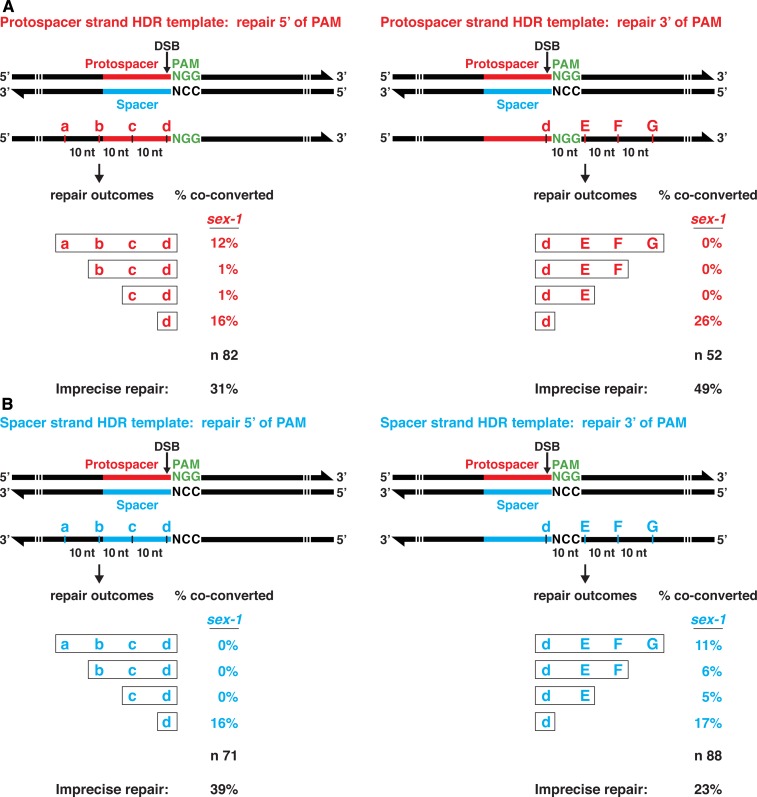Figure 3.
Frequency of SNP insertion from single-stranded repair templates as a function of distance from the DSB. (A and B) Shown is the frequency of diagrammed HDR outcomes at the sex-1 locus using Cas9 RNPs and either (A) single-stranded protospacer strand or (B) spacer strand repair templates with two SNPs located at the DSB (polymorphism d) and single SNPs in one direction from the DSB, in 10 nt intervals. Insertion of polymorphisms at the DSB was highly efficient regardless of the repair template strand, but protospacer strand templates promoted insertion of SNPs only 5′ of the PAM, while spacer strand templates promoted insertion of SNPs only 3′ of the PAM. Repair outcomes revealed a strong tendency to incorporate all SNPs in one direction from the PAM, not just a subset of SNPs. Repair templates include a 40 nt homology arm, an adjacent 30 nt region with SNPs, a PAM, and a 50 nt homology arm. The percentages of repair outcomes reflect the number of the diagrammed outcomes relative to the total number of dpy-10 mutants (n) in the experiment. Percentage of imprecise repair is also indicated.

